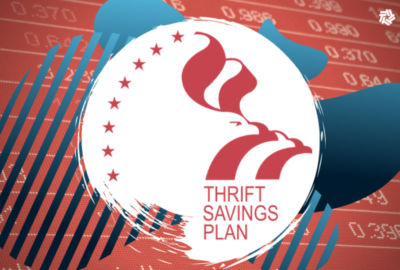Five ways to really louse up your Thrift Savings Plan account
The Thrift Savings Plan might be the easiest way to accumulate wealth ever devised. Still, people find ways to mess it up, or not get the most out of it.
The Thrift Savings Plan might be the easiest way to accumulate wealth ever devised. Still, people find ways to mess it up, or not get the most out of it. Joining the Federal Drive with Tom Temin with five of the most common TSP mistakes, retired federal manager Abe Grungold of AG Financial Services.
Interview Transcript:
Abe Grungold Tom, I always analyze my TSP from day one, and I always tried to make sure how to avoid any type of a financial error that would cost me money down the road. But what I have learned from my business and from listening to, other coworkers and clients, is that there are five common mistakes that TSP participants should avoid. And let me run down through the five.
Tom Temin Yeah, the first one I really like and that is, you know, not being in with both feet.
Abe Grungold Certainly the participants who are not contributing the 5% to the TSP are simply giving away free money that they could be receiving with the 5% match from the government. If you’re only contributing 4%, you’re going to get a 4% match. If you’re contributing 5%, you get the full 5% match. And that is free money that the government is giving you.
Tom Temin Plus, there’s the compounding effect.
Abe Grungold You lose the compounding effect of all those contributions that you could be receiving year after year, and that could be going through a 20-to-25-year retirement. And that really is a bonus that the government gives you every year to invest in your retirement.
Tom Temin Yeah. So, it’s really important to develop that 5% savings habit early on, even early in your career when you think you can’t afford stuff. Maybe one less brunch a month?
Abe Grungold Absolutely. I always made sure that I contributed 5% in, especially in the early part of my federal career. I was contributing 10% so I could be ahead of the gig. But unfortunately, there are some federal employees that cannot afford the contribution because they live in expensive cities such as New York City and San Francisco. But if you could contribute that 5%, you must do it to get the 5% match.
Tom Temin Okay. And then, where you get information can be a mistake or an advantage.
Abe Grungold Yes. Unfortunately, a lot of people go to these media, locations such as TikTok, YouTube and Facebook groups to get their financial information. And basically, what you’re doing is you’re getting information from unreliable sources, basically strangers. It’s okay if you’re looking for a restaurant or a movie to watch on Netflix, but you don’t want to receive financial advice from a stranger in a Facebook forum. You don’t know who this person is. You don’t even know if they’re a federal employee. So why are you taking the risk of getting financial information from this person? Just a big mistake by doing it right?
Tom Temin If anything, you should get advice from an actual fiduciary that you can see in person and shake hands with and check the credentials of.
Abe Grungold Certainly a financial, advisor is a good source, but just look to your own office. There has to be a well-seasoned employee in your office, or a federal retiree that you know who was successful with their TSP. Speak to that person. Ask for the mentor in your office and see if they had contributed 25 years to their TSP and ask the for advice. And that is really the person you should be speaking to.
Tom Temin Many years ago, I worked for a man who had a child with severe and lifetime care needs. And so, his investment strategy as a family, you know, he had two other kids and was driven by the need to leave sufficient legacy such that that young man would be taken care of for the rest of the child’s life after the dad was gone. And so, he was one of the savviest investors I ever knew. And, you know, it’s a different economy then. Different stocks were good. But his advice was, you know, solid.
Abe Grungold Unfortunately, Tom, when I started with the government. There was no TSP, there was no one to ask and you had to really figure it out on your own. But today, with so many employees who are active TSP millionaires who are still working, try to find that person in your organization, pick their brain, and certainly don’t rely on strangers in a Facebook forum to get that information.
Tom Temin We’re speaking with Abe Grun gold, a retired federal manager and owner of AG Financial Services. And then timing or bad timing?
Abe Grungold Yes. You know, I hear this from a lot of clients who subscribe to these monthly investment magazines, and they’re trying to time the market. No one can time the market if you’re able to figure that out. It’s somewhat pure luck. You have the financial wizards like Warren Buffett and many of his friends that do not try to time that market. They buy and they hold for the long term. And if you try to time the market, you’re going to lose gains by making a mistake. No one can predict the ups and downs of the market by for a 20-to-25-year career and consistently invest over time. And you will be successful just by, you know, listening to television and the economics is just not going to give you that guidance.
Tom Temin No. And the TSP funds themselves abstract the need for timing and shifting among stocks for you. That’s the reason you buy those kinds of funds.
Abe Grungold The TSP has a 35-year history Tom, just simply look at the last 10 or 20 years and see which funds perform well. That really should be your guide. You should not be trying to predict what I call the roller coaster of the market, the ups and downs. Just buy and hold and keep buying and time is on your side. It will prove to be your friend.
Tom Temin And you are advising people not to buy a shiny object with your TSP balance.
Abe Grungold Yes, you certainly do not want to buy an annuity, which is offered as a withdrawal option on the TSP. People that, are buying annuities with their TSP balance, they lose the flexibility of their TSP worth, and they lose potential income because if there is no beneficiary, that money is going to simply go to the insurance company. If you want to receive an annuity with your TSP, simply do a monthly withdrawal on your own and divide that by 30, year payments, and you will receive your own annuity that you can set up yourself. But buying an annuity is simply a mistake. And the only person that really should be buying an annuity is someone that has no heirs that they’re going to leave any money to, and they don’t want to leave it to a charity or a legacy. So really, that is the only person that would qualify for an annuity purchase.
Tom Temin Okay. And then the last idea that you’re promulgating is on the borrowing side of things.
Abe Grungold During my federal career, I had four TSP loans. During my federal career, I read many articles that taking out a TSP loan is a mistake. It’s not a mistake as long as you do not treat your TSP like an ATM machine, you need to make a loan from your TSP when you really need to make a loan, and you need to pay that low back in full. If you do not, you’re losing potential retirement income. And what’s worse is when you do not pay that loan back, it becomes a distribution to you. It becomes a tax liability. So, you must pay that low back. And again, I had four TSP loans during my federal career. Never hurt me in the growth of my TSP balance in retirement.
Tom Temin And you probably didn’t buy an expensive pickup truck on a 72-month payback period either.
Abe Grungold I actually did buy two vehicles and I bought two homes using four separate TSP loans. But I made those decisions very carefully, very wisely. And I accelerated my payments back to the TSP so that money could get back in there as soon as possible to grow even further. And remember, when you’re making your TSP load, you’re pay yourself back the interest. That is the most important key feature of the TSP loan.
Copyright © 2025 Federal News Network. All rights reserved. This website is not intended for users located within the European Economic Area.
Tom Temin is host of the Federal Drive and has been providing insight on federal technology and management issues for more than 30 years.
Follow @tteminWFED






